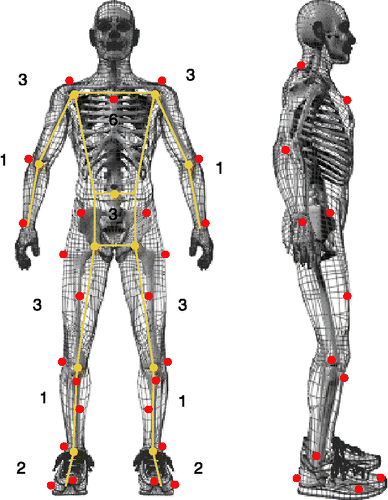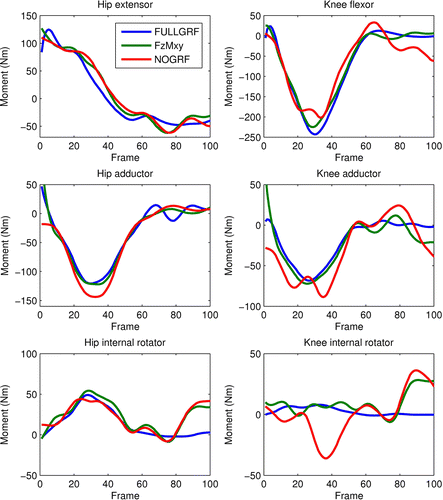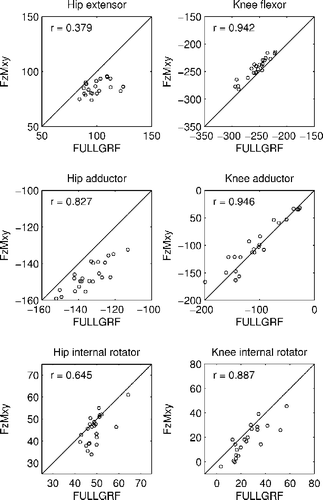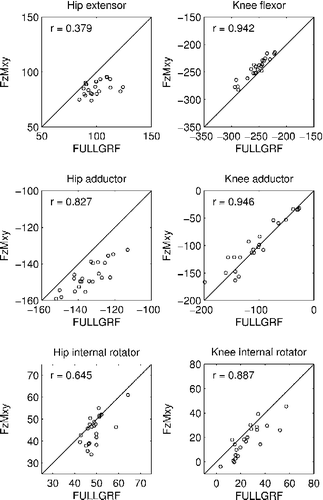Figures & data
Figure 1 Marker set and skeleton model. Numbers indicate the number of DOF assigned to each of the body segments.

Figure 2 Three dimensional joint moments at hip and knee during a representative running trial, obtained with each of the three inverse dynamics methods. Frame rate is 240 Hz and frame 1 represents heel strike.

Figure 3 Peak joint moments (in Nm) in all 23 trials, compared between the NOGRF method (no GRF data used) and the FULLGRF method, where full GRF data is available. Maximum moments were used for hip extensor and both internal rotator moments. Minimum moments were used for knee flexor and both adductor moments.

Figure 4 Peak joint moments in all 23 trials, compared between the FzMxy method (partial instrumentation) and the FULLGRF method, where full GRF data is available.
